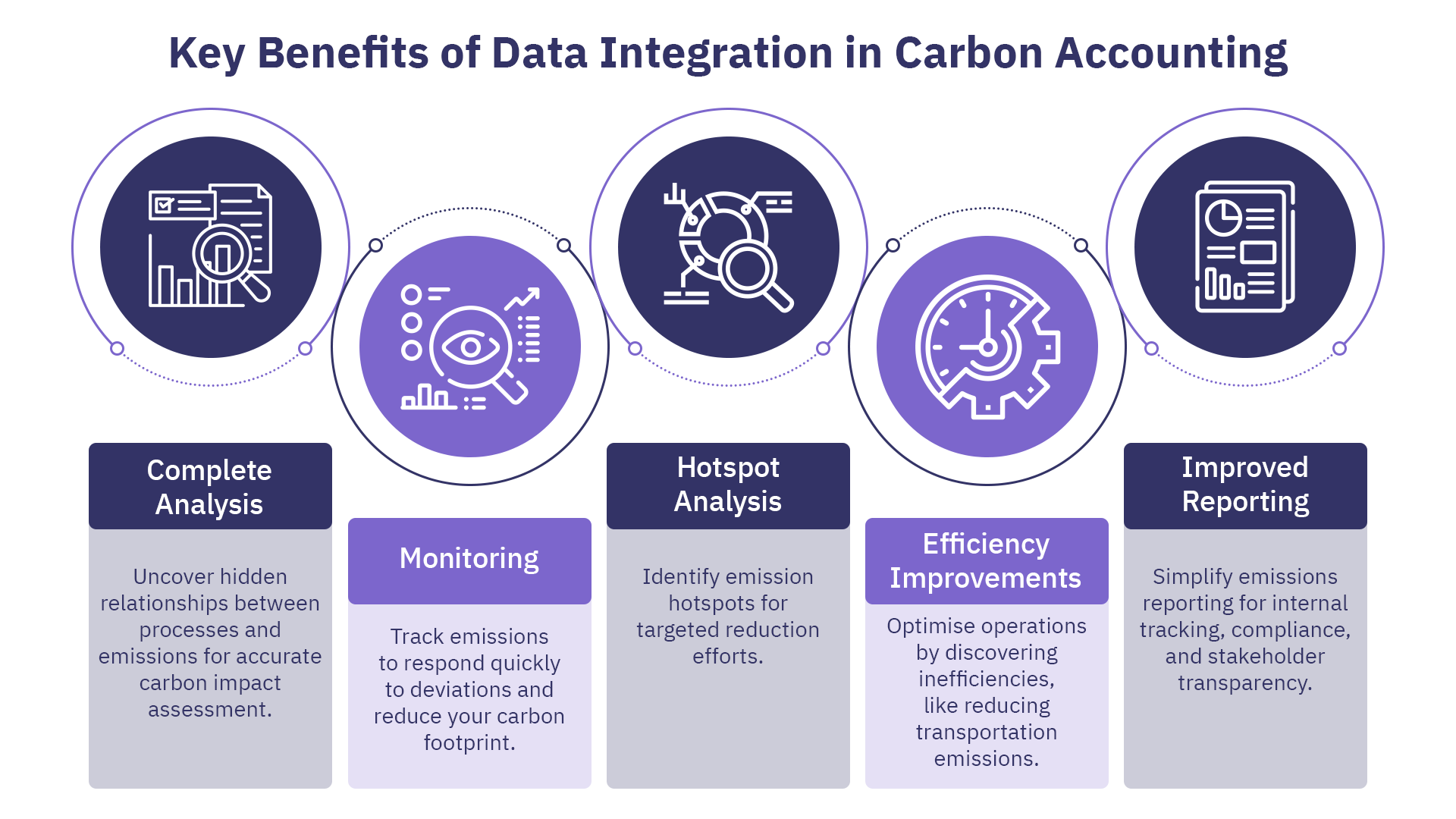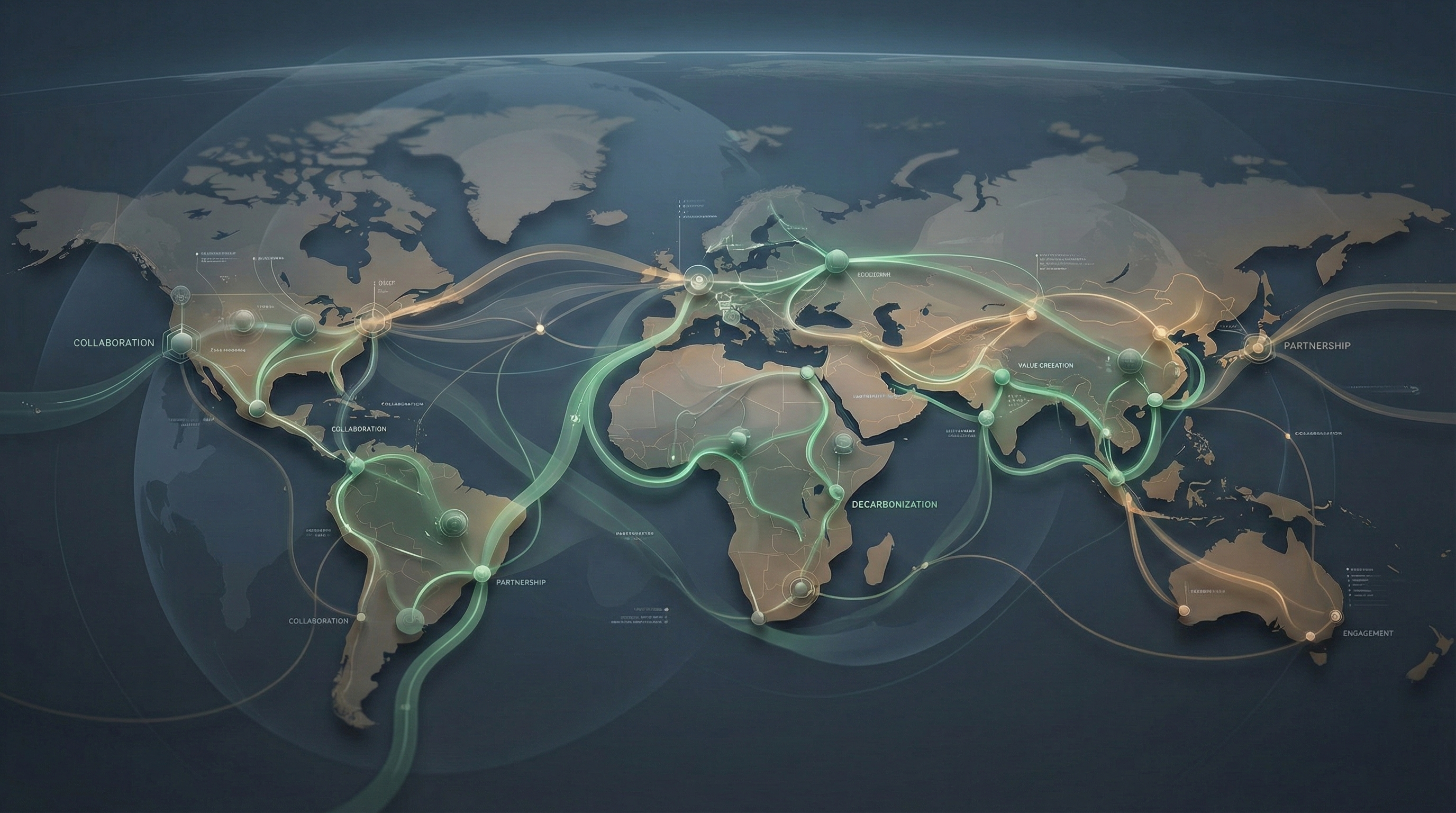Summary
- Over 900 companies have set net-zero targets, yet many struggle with decarbonization, particularly in addressing Scope 3 emissions, which constitute over 75% of total emissions, hindering overall progress.
- Data silos impede effective carbon accounting, making it challenging to access and analyze GHG emissions data from fragmented systems. A strategic data integration approach is needed for accurate tracking and reporting.
- Integrated data systems provide comprehensive analysis, efficient monitoring, and improved reporting of emissions. Despite challenges in data quality and technical compatibility, platforms like Terrascope help streamline emissions management and support decarbonization efforts.
Introduction
Carbon accounting is a rapidly evolving space within enterprises. Over 900 companies from the Forbes 2000 list have established net-zero targets, encompassing an annual revenue of over $26 trillion today. While significant advancements have been made in corporate target setting over the past few years, most companies are yet to make significant progress in their decarbonisation journey according to the UN Race to Zero campaign report. Additionally, only a few companies are addressing Scope 3 emissions, which are indirect upstream and downstream emissions accounting for over 75% of overall emissions, according to the World Resources Institute (WRI).
Data silos are some of the key reasons for the slow pace of emission measurement in large enterprises. Accessing data for calculations of GHG emissions is a challenge since data is stored and managed in isolated systems. This often leads to information being inaccessible and difficult to amalgamate effectively. In the context of carbon accounting, these silos can manifest as segregated databases, disconnected software applications eg: ERP, CRM, HCM apps, and distinct teams managing disparate data points. This fragmentation not only complicates the process of collecting and analysing carbon-related data, but also obstructs the creation of a comprehensive view and accuracy of an organisation's carbon emissions. This challenge can be overcome by having the right data integration strategy.
Carbon accounting needs the seamless integration of data from various sources such as energy consumption, transportation, supply chain, purchased goods, and services data. Data integration helps with this process of combining data from disparate sources into a unified and coherent structure. It entails bringing together data from various departments, such as manufacturing, supply chain, energy management, and more.
Benefits of data ingestion
Once successfully accomplished, it becomes the foundational pillar for organisations to gain a comprehensive understanding of how different aspects of their operations contribute to their carbon footprint, leading to the following key benefits -
- Complete Analysis: Integrated data enables organisations to conduct comprehensive analyses, identifying hidden relationships between processes and emissions sources. This leads to a more accurate assessment of the carbon impact of various activities.
For instance, analysing the integrated data of a sustainable agriculture initiative that combines data from crop yields, irrigation methods, and fertiliser usage can unveil how specific practices influence both productivity and emissions. - Monitoring: Integrated systems allow tracking of emissions, helping organisations respond promptly to deviations and make informed decisions to reduce their carbon footprint.
- Hotspot analysis: Integration helps identify emission hotspots that might have gone unnoticed within isolated datasets. This knowledge allows targeted interventions for emission reduction.
- Efficiency Improvements: Integrated data systems can reveal inefficiencies and opportunities for optimisation across operations. For example, by analysing the entire supply chain, organisations can find ways to reduce transportation-related emissions.
- Improved Reporting and Transparency: Integrated data simplifies the process of generating accurate and detailed emissions reports. These reports are crucial for internal tracking, compliance with regulations, and transparency in sustainability reporting to stakeholders.

While the benefits are evident, data integration for carbon accounting comes with its own challenges:
- Data Quality and Consistency: Integrating data from various sources often exposes inconsistencies, errors, and gaps in data quality. Differing units of measurement, data formats, and accuracy levels can lead to inaccurate emissions calculations.
- Data Accessibility: Some departments or data sources might not readily share their data due to privacy concerns, proprietary systems, or a lack of standardised data sharing protocols.
- Technical Compatibility: Integrating data from different systems, databases, and software applications can be technically complex. Ensuring that these systems are compatible and can communicate effectively is a challenge.
- Data Volume and Complexity: Carbon accounting requires data from a wide range of sources, generating large volumes of data. Managing and processing this data efficiently can be daunting, especially as the complexity of an organisation's operations increases.
Overcoming these challenges requires a strategic approach that involves collaboration across departments, clear communication, robust data governance policies, and the use of appropriate technologies.
Be the first to know.
Join us on LinkedIn to get curated updates monthly.
Conclusion
While data integration in carbon accounting is not without its challenges, Terrascope, a CDP Gold accredited end-to-end decarbonisation platform, helps break down silos and provides data integration capabilities that serve as a bridge, connecting various organisational aspects and offering an accurate view of emissions sources and interdependencies. This, in turn, will empower companies to set targets and achieve tangible emissions reduction, getting them started on their decarbonisation journey.

Amit Dhamane
Lead Solutions Engineer, Terrascope


